Updated (Oct 07, 2022):
SBP’s Tweet about the Issuance of the All-new 75 Rupees Note
According to the SBP’s official tweet, the PKR 75 note is finally available for public use at all of its Banking Services Corporation (BSC) offices across the country. In its history, the central bank has issued the second commemorative currency note after the first 50-rupee commemorative note that was introduced in 1997 to celebrate the country’s 50 years of independence.
New Commemorative banknote of Rs75 is now available for general public at all SBP BSC offices and branches of commercial banks. This banknote is legal tender and can be used as medium of exchange for all transactions across Pakistan. pic.twitter.com/EFuU1rHtr1
— SBP (@StateBank_Pak) September 30, 2022
Pakistan Gets 75 Rupees Currency Note on Its 75th Birthday
In a bid to mark Pakistan’s 75 Independence day with a commemorative development, the State Bank of Pakistan (SBP) officially revealed the brand-new PKR 75 banknote. According to the central bank’s Twitter handle, the public issuance of the PKR 75 note will start on September 30, 2022.
1/2 #SBP unveils the design of Rs.75 commemorative banknote being issued on 75th anniversary of the country’s independence. The note will be available for public issuance from 30th September 2022.
— SBP (@StateBank_Pak) August 14, 2022
For details: https://t.co/ZvCNGKxSjV pic.twitter.com/qweDbs28g7
As you can see in the video above, the colour of the currency note is mainly emerald green while some of its parts have light green, white and grey colours. On the front side of the note, are the portraits of Sir Syed Ahmad Khan, Mohtarma Fatima Jinnah, Quaid-e-Azam Muhammad Ali Jinnah, and Allama Muhammad Iqbal (from left to right).
Meanwhile, the backside of the note has a picture of Markhor, emphasizing the importance of environmental conservation. Unveiled on August 14, 2022, the commemorative currency note is still making the rounds on the internet, receiving mixed reactions from the netizens.
As Pakistanis, we seldom ever wonder about the history of Pakistani currency or even notice the various depictions on the currency notes that we use daily. Moreover, we do not pay any particular attention even when we sit down with our parents or grandparents and hear them talking about the days when ‘ana’ and ‘paisa’ were all the rage. So, chances are that you might not be aware of the evolution that Pakistani currency has gone through and why it is in the form it currently is.
A long list of thoughtful and consistent efforts have gone into shaping our currency notes and how they are printed. Even the coins we use have been through several iterations. Here, we’ll talk about the history of Pakistani currency, all the way from 1947 to recent years. We’ll also share information about what is printed on the back of the currency notes and coins currently in circulation.
History of Pakistani Currency Notes
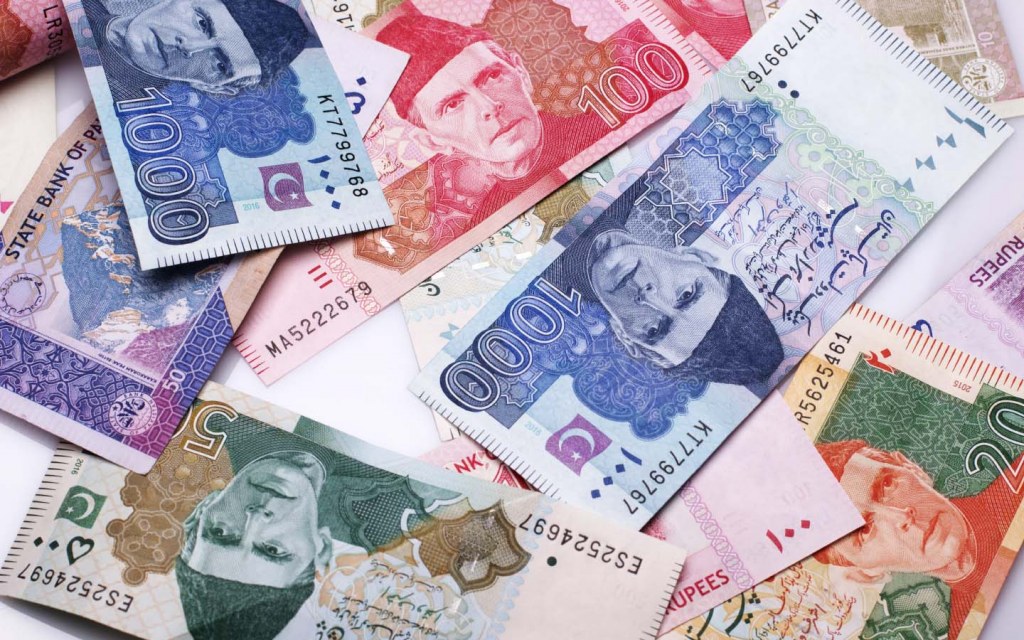
Indian currency issued by the Reserve Bank of India was being used in the sub-continent when Pakistan gained independence in 1947. Since Pakistan was a newly independent nation, it was not possible to set up a central banking system in the country immediately. Therefore, provisions were made for currency to be supplied to Pakistan after its establishment, from the Reserve Bank of India.
After 1947
The earliest currency, therefore, was the Indian Rupee, which had ‘Government of Pakistan’ printed on it in English and ‘Hakumat-e-Pakistan’ printed on it in Urdu on the white area of the note reserved for watermarks. The provision for the issuance of currency to the newly independent country was made by the Governor General of India, a day before independence.
According to the provision, the Reserve Bank of India would function as the sole authority for the issuance of currency to both India and Pakistan until the 30th of September 1948. The Government of Pakistan was given a deadline of one year to set up its banking system and a printing press.
In the meantime, the printing plates were modified to include the ‘Government of Pakistan’ tags on the notes to avoid forgery due to overprints. The notes went into circulation on the 1st of April, 1948, and included denominations of 1, 2, 5, 10, and 100 Rupee notes.
After the Establishment of the State Bank of Pakistan
The first banknotes issued by the State Bank of Pakistan were released on the 1st of October 1948, in denominations of 5, 10 and 100 Rupee. The currency notes were printed by a British firm, Thomas De La Rue & Company. The 5-Rupee note of that time used to be blue, the 10-Rupee one was reddish-orange, and the 100-Rupee note was dark green.
The 1 and 2-Rupee notes were issued about six months later, on the 1st of March 1949. They were printed by a British firm named Bradbury Wilkinson & Company. The 1-Rupee note was green in clour with Naulakha Pavilion on the back, while the 2-Rupee note was brown with Badshahi Mosque on the back.
New designs for the 5, 10 and 100-Rupee note were then sent out for approval and once approved, the 5 and 10-Rupee notes were issued by the State Bank of Pakistan, printed by Thomas De La Rue in September of 1959. The 5-Rupee note had the Khyber Pass on its back, while the 10 Rupee note had Makli Tombs on the back. The first 100-Rupee note was issued about 2 years later as the initial design was rejected. These early notes contained the crescent moon and star, either as print or as a watermark to signify Pakistan.
However, after news of forgery reached the Cabinet in 1956, a new series was designed with the portrait of Muhammad Ali Jinnah. In this series, the 100-Rupee note was the first to be issued near the end of 1957, which was green in colour, had a print as well as a watermark of Muhammad Ali Jinnah and had the Badshahi Mosque at the back of the note. By the end of 1970, the 50, 500, 5, and 10-Rupee notes had also been issued.
After the Separation of East Pakistan
After the separation of East Pakistan, many depictions on the notes, such as Bengali text, were no longer appropriate and therefore, a new generation of Pakistani notes was designed to be issued. The first note in this series was the 1-Rupee note, introduced in May of 1974. It was blue in colour with writing in all four major regional languages. The back contained an image of the Minar-e-Pakistan. This note was short lived due to its use of regional languages, which could potentially create a divide among the people.
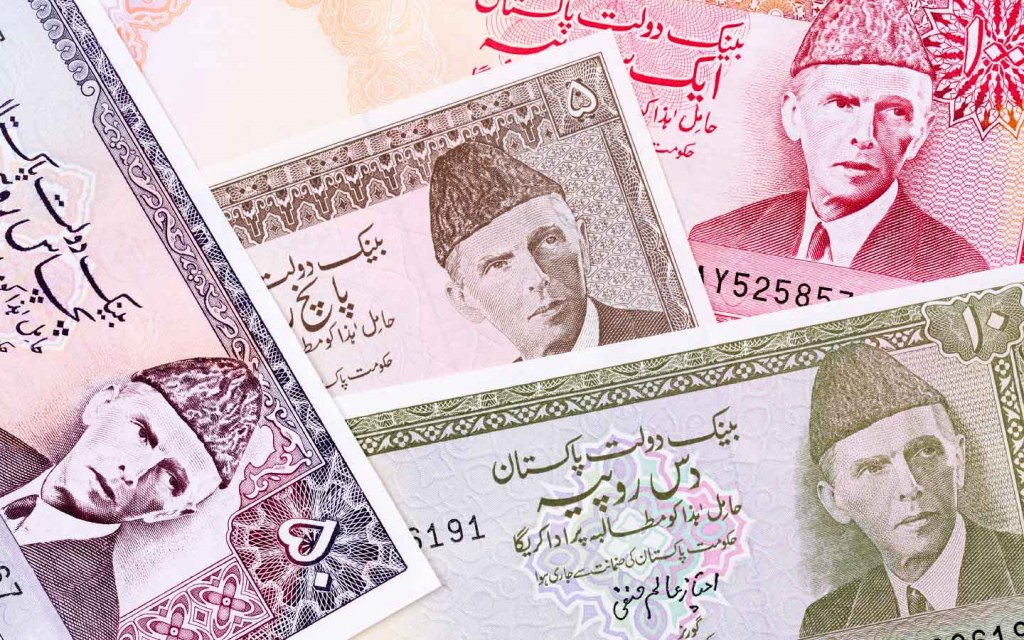
In April 1975, a new 1-Rupee note was circulated with 5, 10 and 100-Rupee notes also being issued the next year. Next on the list was the 50-Rupee note which was circulated near the end of 1977. The 2-Rupee note was made available for use in August of 1985, while the 500-Rupee note was issued in April of 1986. The 1000-Rupee note was then printed and circulated in July of 1988. These notes were the standard currency of the country for a reasonably long time.
However, when modern techniques were available to protect the currency further, it was decided to redesign the notes with advanced features. The first ever 20-Rupee note was printed and introduced in August of 2005. It was originally brown in colour, with Mohenjo-Daro depicted on its back. Other notes were also redesigned as part of the series, except for the 1 and 2-Rupee notes, which were discontinued in favour of coins. The 5-Rupee note was also discontinued later in 2012.
At present, the highest note in circulation is the 5000-Rupee note, which is mustard in colour and was circulated in May of 2006. It was the first time that this denomination was introduced in Pakistani currency.
History of Pakistani Coins
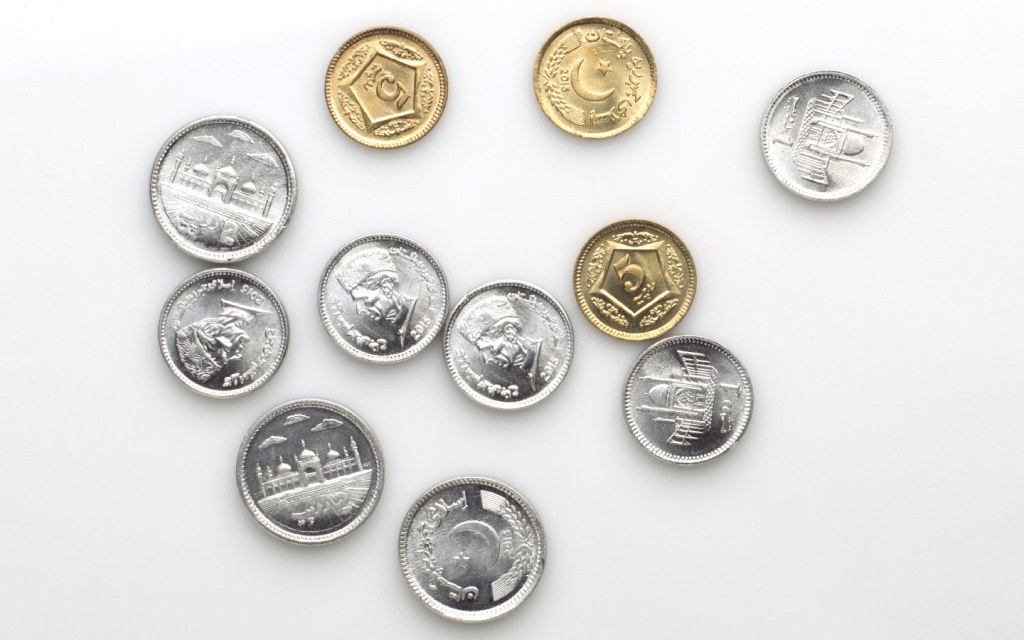
Pakistani currency also used to have coins of several denominations in the past. Up to 1960, 1 Pakistani Rupee used to have 16 ana in it, and each ana had 4 paisa in it, meaning each Rupee had 64 paisa in it. Accordingly, the coins in circulation were 1 paisa, 2 paisa, 1 ana, 2 ana, 4 ana, 8 ana, and 1-Rupee.
After 1960, Pakistan adopted the metric system for its currency, and 1 Pakistani Rupee then had 100 paisa in it. The coins of the time were 1, 2, 5, 10, 25 and 50 paisa. Most of these remained in circulation till the 1990s before they were discontinued.
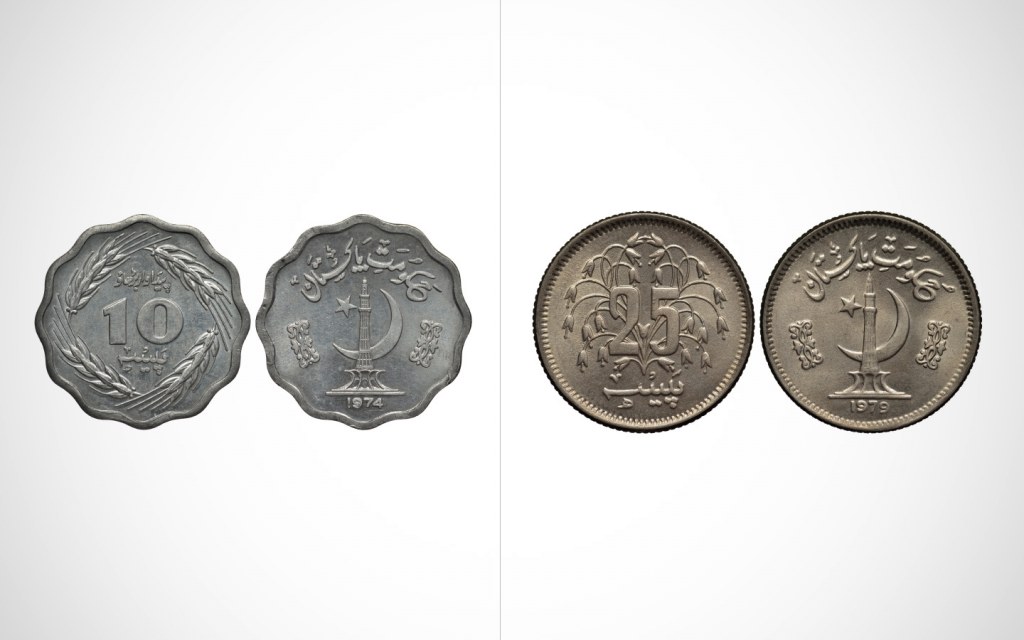
The 1 and 2-Rupee coins were issued at around the same time and are still in use today, although there has been a change in the metal used to create them. A 5-Rupee coin was circulated once the note was discontinued. A 10-Rupee coin is also in circulation but is rarely used.
Depictions on the Backs of the Notes
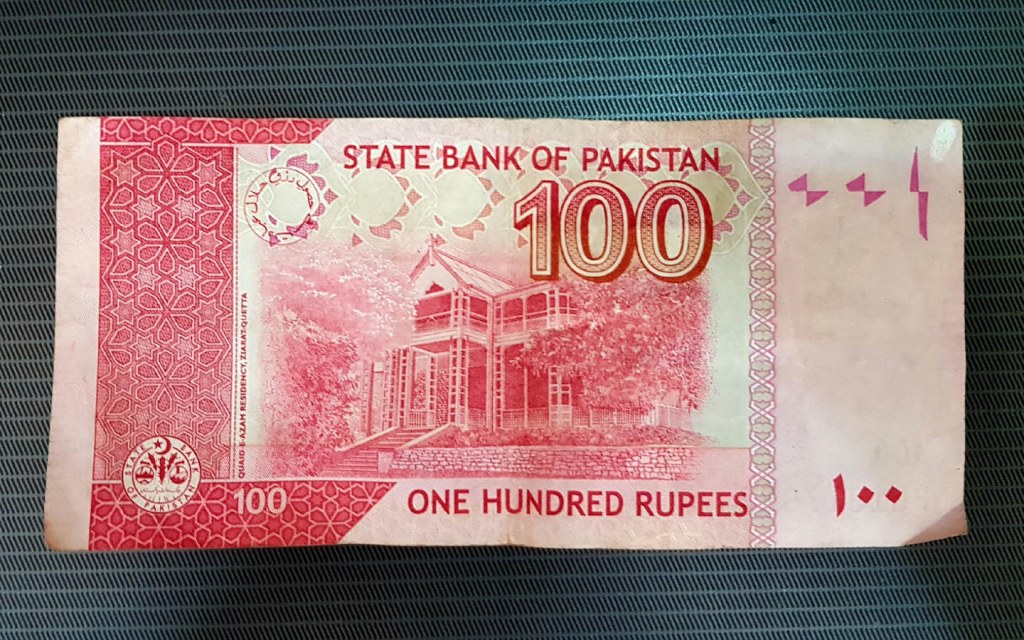
Have you ever looked at the back of your currency notes and wondered what is printed on them? Aside from the watermarks and a range of other printing specifications that help prevent forgery, each note has a place of historical, national or cultural importance printed on it.
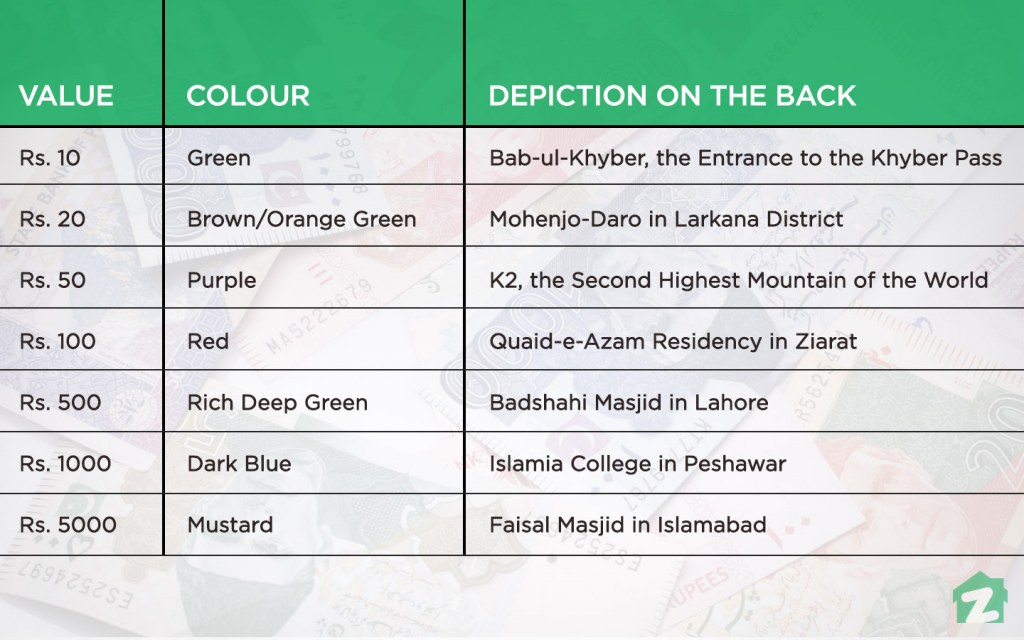
The table above highlights what is depicted on the back of each of the currency notes that are currently in circulation. We’ve also included all the valid currency coins in our list.
Pakistan Currency Museum, Karachi
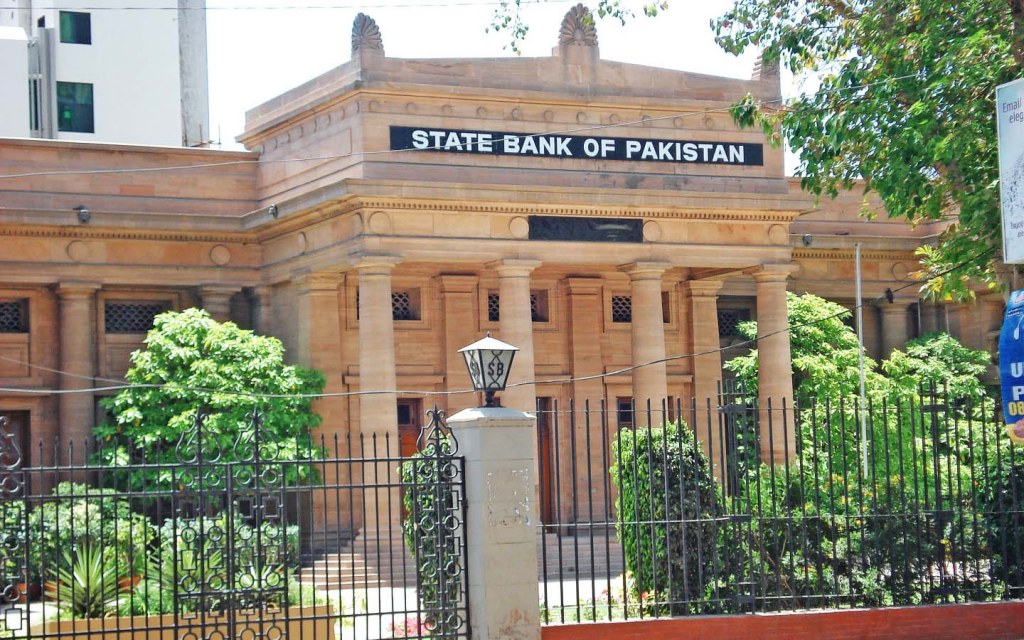
If you are interested in learning more about the history of Pakistani currency, the State Bank of Pakistan has established the country’s first currency museum in one of its oldest buildings in Karachi near its head office. Located on I. I. Chundrigar Road, the museum holds a lot of financial history within its walls. There are also old banknotes and coins on display. The museum contains six galleries:
- History of State Bank of Pakistan
- Coins Gallery – I & II
- Currency Gallery
- SBP Governors
- Art Gallery
- Stamp Gallery
The museum is open Monday to Saturday from 9:30 am to 5:00 pm and the entry is free for people interested in taking a glimpse at the history it holds.
Are you looking for the best real estate blogs in Pakistan? Want to connect to the top source of property blogs in Pakistan? Stay connected to Zameen Blog and share your favourite pieces with your friends and family.



